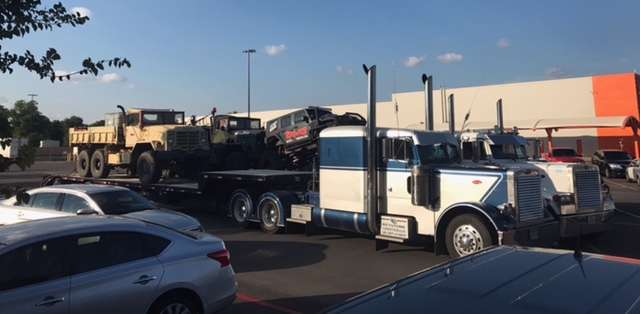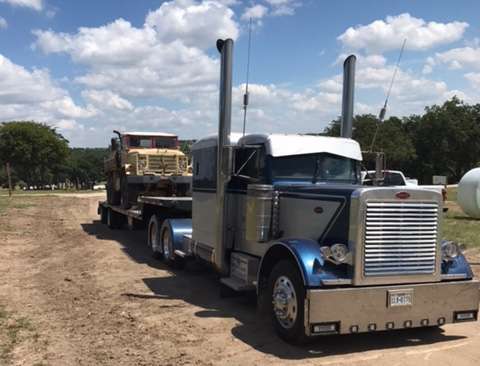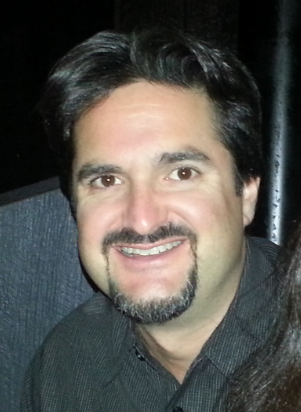
When the GEICO Bassmaster Classic presented by DICK’s Sporting Goods was held in Houston, Texas, five months ago, all eyes in the bass fishing world watched the Lone Star State with anticipation and excitement.
Now, the world watches with anxiety and dismay.
Hurricane Harvey ravaged southeast Texas when it made landfall near the coastal town of Rockport on Aug. 25. The storm, which came off the Mexico’s Yucatan Peninsula as a weakened tropical depression only a couple days before, exploded into a superstorm over the warm waters of the Gulf of Mexico. It slammed into the southeast Texas coast as a Category 4 monster, sustaining winds of 130 miles per hour and spinning tornadoes in all directions. Then to add insult to injury, Harvey stagnated over the greater Houston area and dumped as many as 40 inches of rain in spots.
The devastation was unprecedented in Houston; the fourth largest city in the U.S. Tens of thousands of homes and businesses flooded, hundreds of thousands were displaced and millions are left to pick up the pieces of a tattered metropolis.
Members of the B.A.S.S. Nation are among those who have lost untold personal property in Texas and even in Louisiana, as Harvey mercilessly backed out into the Gulf before climbing northward again and cutting a rainy swath across the heart of Louisiana.
But others in the B.A.S.S. community are doing their part to help the most affected in their time of need. They used their own aluminum boats and other various work vessels to rescue people stranded in their homes – now makeshift islands jutting skyward from a submerged grid of avenues and interstates.
“I grew up around water, but I’ve never seen anything like this,” said Elite Series pro Alton Jones Jr., who was patrolling the Houston area in a buddy’s tin skiff late Tuesday afternoon and looking to help anyone in need. “I’ve seen flooded rivers before fishing tournaments. I mean, I’ve flipped trees in flooded front yards before. But nothing like this. It’s scary.”
Jones arrived on Tuesday from his home in Waco, which is nearly three hours north of Houston. A team of some 15 boats from the Waco area was on the flooded streets the same day Jones said, and he in particular had coordinated his own effort with the Harris County Sheriff’s Office. He also consulted members of the “Texas Navy” who have helped organize a volunteer flotilla of rescue boats throughout the southeast part of the state over the past few days.
Jones had been in the Houston suburbs of Katy and Cypress earlier in the day, but he said his most frightening moments came near the Addicks Reservoir some 15 miles from Houston, where floodwater breached levees earlier on Tuesday. Water was rising 4 to 6 inches per hour there, and officials said the worst has yet to come. The peak water rise at Addicks wasn’t expected until Thursday and uncontrolled spilling from the reservoir was expected to last another three weeks. Harris County officials also confirmed via social media on Tuesday that those flood waters were expected to flood parts of downtown Houston in the near future, which would be unprecedented as well.
“It’s crazy,” Jones said. “There are boats everywhere, and there’s a lot of strong current. There are some tired people who have been helping rescue the stranded for two or three days now, and tensions are high. I moved four people today, I think, and I must have asked 50 if they wanted to leave. You tell them the water is coming up fast, you’ll have no power, it could be like that for weeks. You say, ‘Please come with me.’ But most of them don’t. It’s sad. You can’t make them leave.”
For those who have been part of relief efforts in extreme floods before, that public response is not uncommon. Many citizens who don’t see immediate need to abandon their homes often are left stranded when catastrophe strikes as it did Tuesday in the Addicks and Barker reservoirs west of downtown Houston.
Jones boated through about 25 miles of water-filled streets on Tuesday and said several people recognized him as a pro bass angler. He said many of those helping were obviously bass anglers themselves.
“There’s been a Skeeter Fx20 in the same area as me for a while now,” he said.
David Glezman, president of the Texas B.A.S.S. Nation, said more than a quarter of the state’s members live in southeast Texas, and he has been in contact with most via social media. Almost all have reported they have yet to flood during Harvey’s incessant downpours, and they have done their best to help by delivering supplies to shelters when they can.
“Many of our members in the Houston area are stranded,” Glezman said. “They didn’t flood, but they can’t get out of their homes until this water recedes, and it looks like it could be a good while before that happens. But the ones that could get out, once they realized their families were OK, they went to help. They deployed themselves independently and started conducting rescues.”
Glezman said Harvey’s path of destruction has been hard to predict, as continued rain has exacerbated flooding in different areas at different time. He said one of the hardest hit areas was the city of Conroe whose centerpiece is, of course, Lake Conroe – site of the 2017 Bassmaster Classic.
“All those beautiful homes on Lake Conroe took water,” he said. “When there is a controlled release on Conroe, it just doesn’t affect a small area. It affects people into Harris County (Houston). There, and the backside of The Woodlands area, and Spring and Cypress…My wife said there was so much flooding where the San Jacinto River hits Interstate 45, that it looked like Lake Conroe itself on the roads there.”
Trait Zaldain, a pro angler who fishes the Bassmaster Open events, said she has numerous friends and family in the greater Houston area, but they luckily have been spared the worst of the damage suffered elsewhere across the sprawling cityscape.
“I talked with some cousins who live in Houston and they have water in their driveway, but their neighbors down the streets have several feet in their house,” she said. “A high school friend lives in the White Oak Bayou area and she didn’t flood yet. But her friend is about a mile closer to the bayou and she had 6 feet and had to evacuate her house.”
Zaldain’s family owns an oil field supply company based out of Rhome, Texas, in the Fort Worth area. Her brother hauled a load of high-water vehicles to Houston earlier in the week when a family friend offered their use to people in need. Zaldain remained in Fort Worth and said she feels “almost guilty” not being in Houston with the relief effort.
“(Elite Series pro and husband) Chris (Zaldain) and I want to help, but we don’t have aluminum boats and we don’t know the lay of the land,” Trait Zaldain said. “You want to help, and you just feel terrible you can’t all be there.
“It’s a terrible feeling,” she said, her voice trailing off, overcome with emotion.
The Zaldains are hoping to make their way to the Houston area after Trait competes in the Bass Pro Shops Bassmaster Northern Open No. 3 on Lake Douglas in Tennessee next week. She said it’s hard to focus on fishing knowing the devastation in her home state.
“You feel selfish thinking about fishing,” she said. “The house where we stayed at Conroe when Chris was in the Classic this year is flooded. Our friends that live in that same neighborhood said it had 3 feet of water in it…Hearts are breaking in Texas, but this state is strong.”
That sentiment was echoed by Brandon Simoneaux, a collegiate angler at Lamar University in Beaumont about an hour east of Houston. He grew up in the coastal Texas community of Bridge City and saw his family home flood with 3 feet of water during Hurricane Ike in 2008.
“This isn’t our first rodeo,” Simoneaux said Tuesday night, only moments after spending a 12-hour day rescuing people, their pets and belongings. “We got a call about helping a woman in Beaumont and we got her and her two dogs out…Later we were around Moss Hill and the Trinity River and I was having to run the boat a mile or more down streets to get to some houses.”
Simoneaux was joined by five childhood friends on the rescues, and he said a Lamar teammate was helping people closer to Houston area. School was supposed to start this week, but with that date moved back until Monday at earliest, they wanted to help now in any way they could.
“I would have felt really guilty staying at home and not doing something,” Simoneaux said. “Right now, it’s about giving it all you have and getting people out of harm’s way.”
Charities of all kinds need assistance as they help people recover from the devastation caused by Hurricane Harvey. A few of the more prominent local groups working in the immediate southeast Texas area include the Greater Houston Community Foundation’s Hurricane Harvey Relief Fund at ghcf.org/hurricane-relief; the Houston Food Bank at www.houstonfoodbank.org; the Food Bank of Corpus Christi at www.foodbankcc.com; the United Way of Greater Houston at www.unitedwayhouston.org/flood/flood-donation; and Catholic Charities of the Archdiocese of Galveston-Houston (which offers services to people of all faiths) at catholiccharities.org/donate-now-and-help-our-neighbors-recover-from-disaster.


